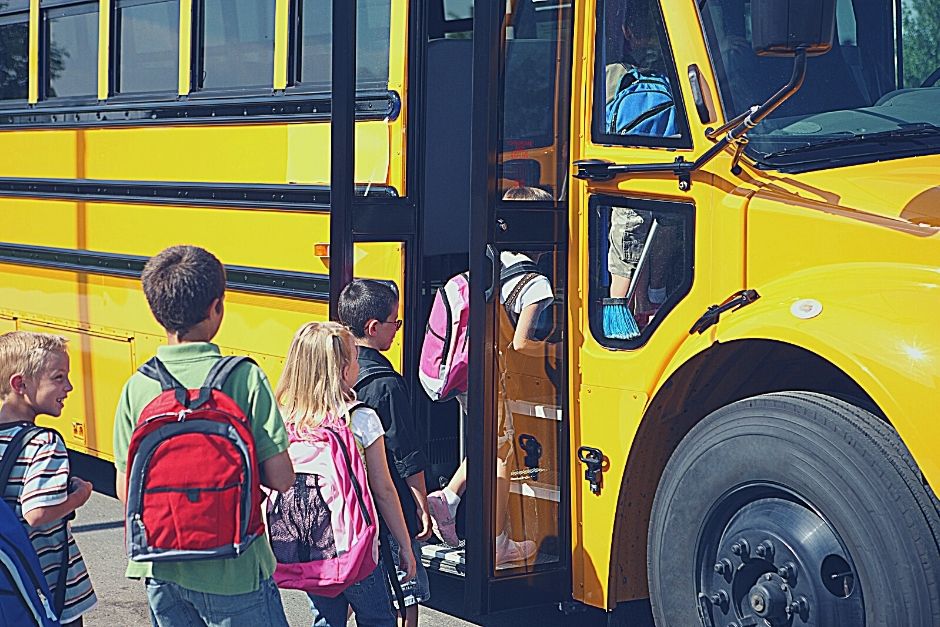This fall will probably be the first time most children have been on a school bus since the start of the pandemic. While returning to the classroom may provoke more anxiety among parents and children in 2021 than in 2019, you can be assured that riding the school bus doesn’t have to be one of the experiences you worry about.
According to the National Highway Traffic Safety Administration (NHTSA), school buses are the safest vehicles on the road for your children. About 25 million students ride the bus every day during a normal school year. From 2010 to 2019, 126 occupants were killed in school transportation vehicles, only a tiny fraction of the total number of people killed on the roads. In fact, the research shows that students are 70 times more likely to make it to school safely on the bus than in a car.
This is partly because busses are designed for children’s safety. They are highly visible with flashing red lights, stop-sign arms and a bright yellow color. They have cross-view safety mirrors, offer protective seating, high crush standards and rollover protection features. Most newer school busses are equipped with seatbelts or lap belts and have emergency exit options in all areas of the bus.
At the same time, the regulations covering school bus drivers are designed to ensure they behave safely in traffic. Although the laws vary state by state, school bus drivers are generally required to receive more training than any other driver. They undergo background checks and must have current Department of Transportation Medical Certificates, first aid training and pre-employment and random drug and alcohol testing. They also are required to maintain a clean driving record, both professionally and personally.
But even with these precautions, we all have to do our part to keep kids on busses safe.
School Bus Safety Tips
- By law, drivers must stop if they are behind a school bus displaying yellow or red flashing lights and a stop sign. Passing a school bus with red flashing lights can result in hefty fines and penalties.
- If there is a school bus in front of your vehicle, always keep a safe distance so that you have time to slow down and stop when the bus does.
- Drivers should be especially cautious and follow the speed limit in school zones and near bus stops. Remember to stay alert and look for kids who may be trying to get to or from the school bus.
- Parents can help children prepare to safely get on the bus. Make sure they have plenty of time to get to the bus stop because running to catch the bus is dangerous. Encourage them to pack all belongings in their backpack or book bag so they don’t drop items as they approach, get on or get off the bus. Urge them not to pick up something as they are getting on or off the bus, without notifying the driver first.
- Walk with your young kids to the bus stop and wait with them until it arrives. Make sure drivers can see the kids at your bus stop.
- Don’t allow children to play in the street while waiting for the bus.
- Teach kids to stand at least three giant steps back from the curb as the bus arrives, wait to approach the bus until it has come to a complete stop and board the bus one at a time.
- If your child needs to cross the street after exiting the bus, he or she should take five giant steps in front of the bus, make eye contact with the bus driver and cross when the driver indicates it’s safe. They should never walk behind the bus.
- When they are on, children must be seated and not moving around the bus.
- If a student misbehaves and causes disruption, the driver has the right to take away their privilege to ride the bus.
- Children should not be texting, use their mobile devices or headphones while getting on or off the bus. They need to be alert to what is going on around them.
We at TSS wish everyone a safe return to the classroom. For additional questions about traffic safety resources, contact our safety specialists at info@tss-safety.com.

